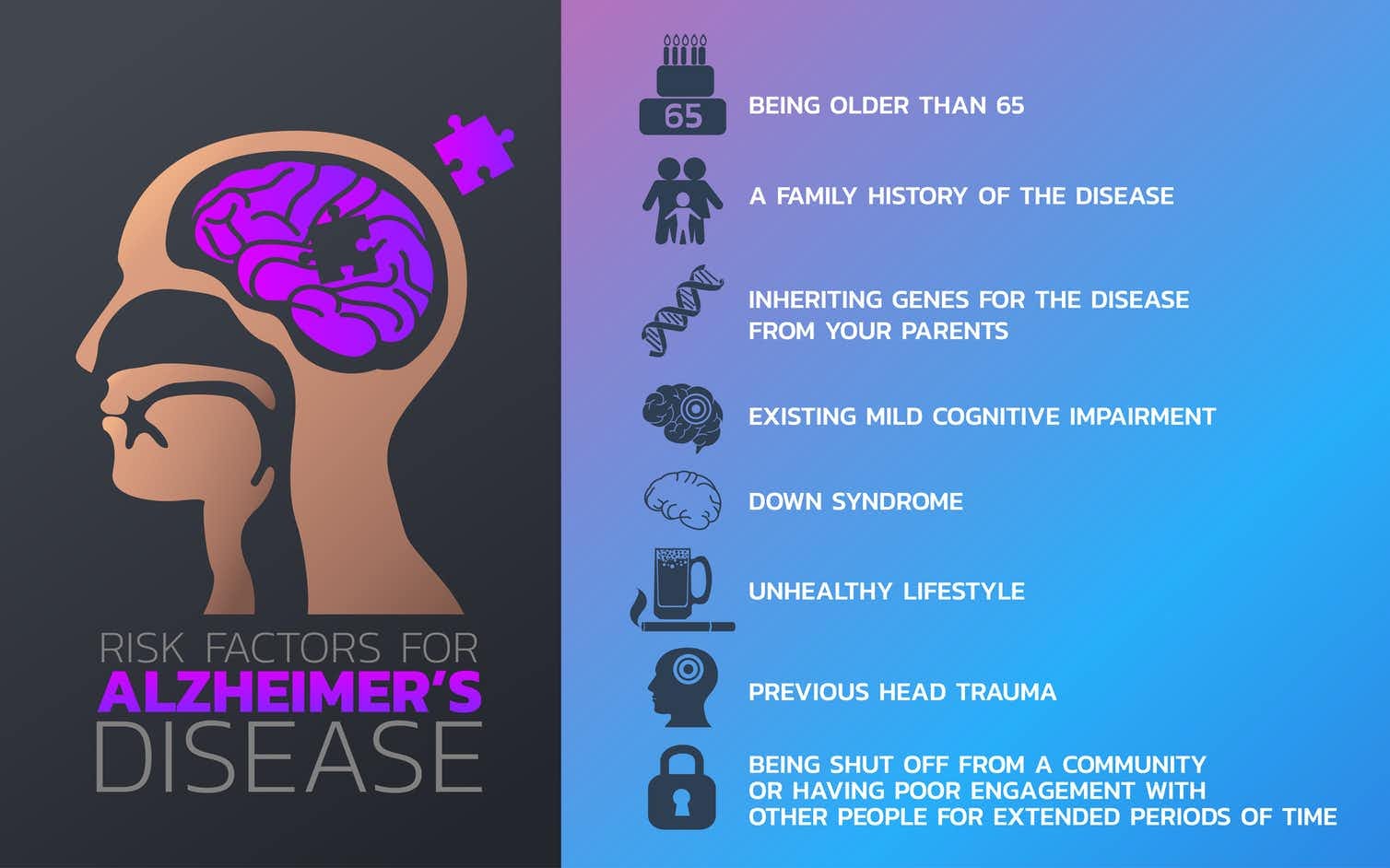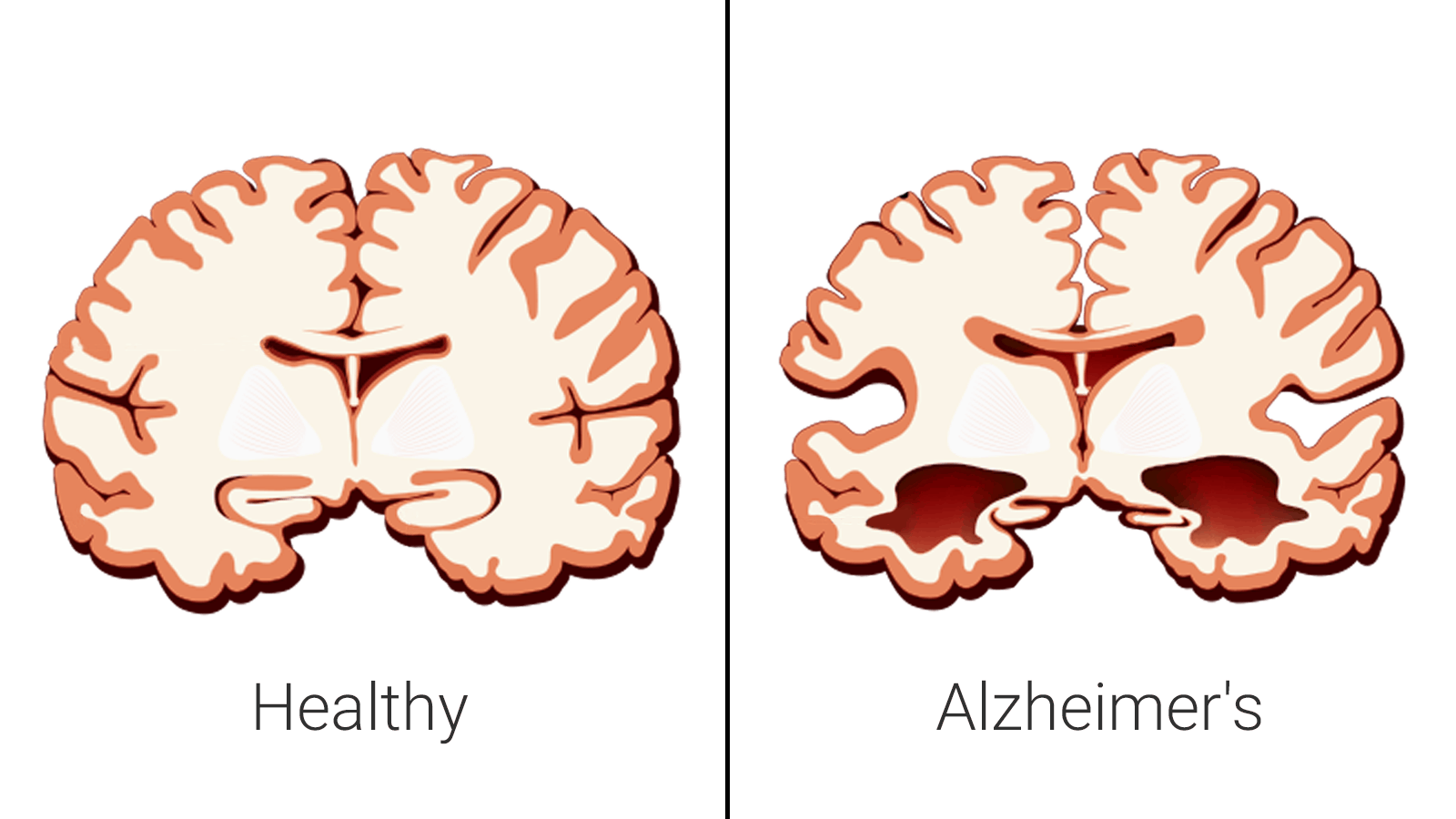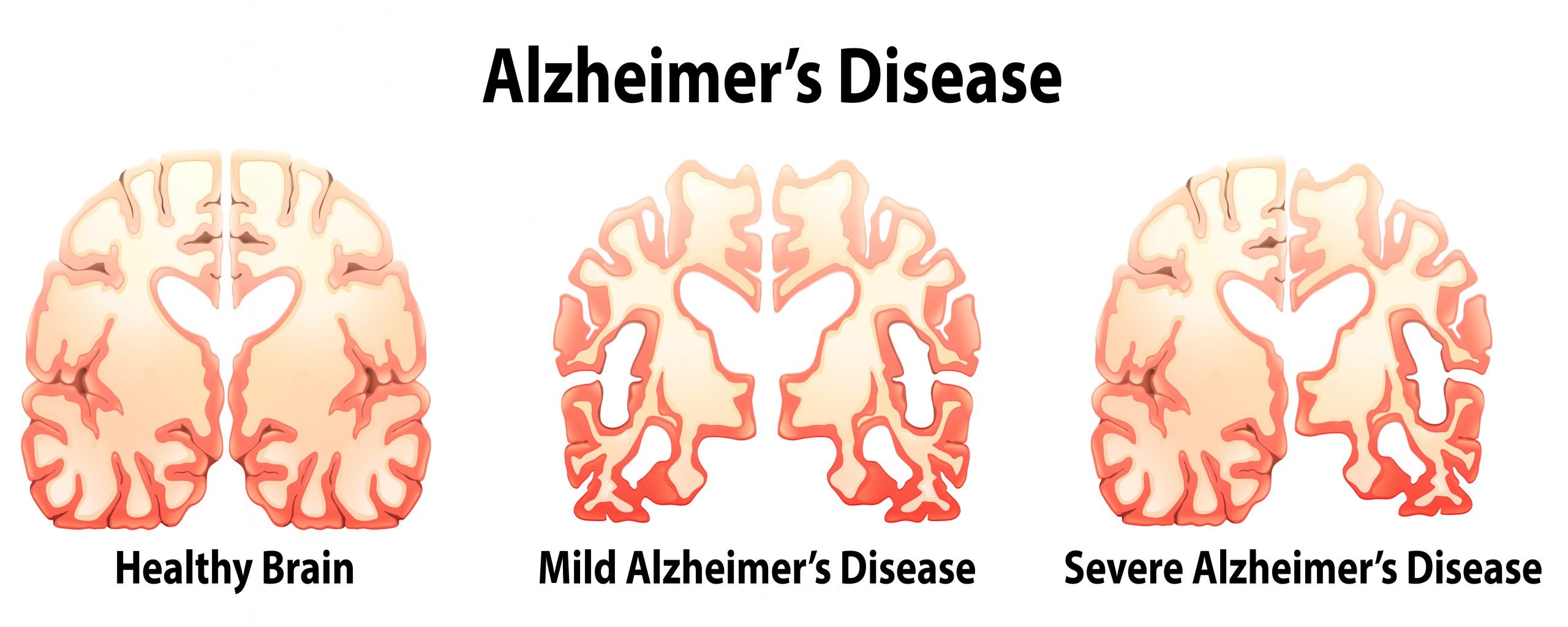How Is Alzheimers Disease Diagnosed
Doctors use several methods and tools to help determine whether a person who is having memory problems has Alzheimers disease.
To diagnose Alzheimers, doctors may:
- Ask the person and a family member or friend questions about overall health, use of prescription and over-the-counter medicines, diet, past medical problems, ability to carry out daily activities, and changes in behavior and personality.
- Conduct tests of memory, problem solving, attention, counting, and language.
- Carry out standard medical tests, such as blood and urine tests, to identify other possible causes of the problem.
- Perform brain scans, such as computed tomography , magnetic resonance imaging , or positron emission tomography , to support an Alzheimers diagnosis or to rule out other possible causes for symptoms.
These tests may be repeated to give doctors information about how the persons memory and other cognitive functions are changing over time.
People with memory and thinking concerns should talk to their doctor to find out whether their symptoms are due to Alzheimers or another cause, such as stroke, tumor, Parkinsons disease, sleep disturbances, side effects of medication, an infection, or another type of dementia. Some of these conditions may be treatable and possibly reversible.
In addition, an early diagnosis provides people with more opportunities to participate in clinical trials or other research studies testing possible new treatments for Alzheimers.
How Common Is Alzheimers Disease
Alzheimers disease is the most common cause of dementia . Alzheimers disease is the sixth leading cause of death in the United States.
One in 10 people older than 65 and nearly half of people older than 85 have Alzheimers disease. Alzheimers disease can also affect people in their 40s. The percentage of people who have Alzheimers disease rises every decade beyond the age of 60. According to the Alzheimer’s Association, with the aging of the population and without successful treatment, there will be 14 million Americans and 106 million people worldwide with Alzheimers disease by 2050.
What Is Alzheimer’s Disease
Alzheimers disease is a brain disorder that slowly destroys memory and thinking skills and, eventually, the ability to carry out the simplest tasks. In most people with the disease those with the late-onset type symptoms first appear in their mid-60s. Early-onset Alzheimers occurs between a persons 30s and mid-60s and is very rare. Alzheimers disease is the most common cause of dementia among older adults.
The disease is named after Dr. Alois Alzheimer. In 1906, Dr. Alzheimer noticed changes in the brain tissue of a woman who had died of an unusual mental illness. Her symptoms included memory loss, language problems, and unpredictable behavior. After she died, he examined her brain and found many abnormal clumps and tangled bundles of fibers .
These plaques and tangles in the brain are still considered some of the main features of Alzheimers disease. Another feature is the loss of connections between nerve cells in the brain. Neurons transmit messages between different parts of the brain, and from the brain to muscles and organs in the body. Many other complex brain changes are thought to play a role in Alzheimers, too.
This damage initially appears to take place in the hippocampus, the part of the brain essential in forming memories. As neurons die, additional parts of the brain are affected. By the final stage of Alzheimers, damage is widespread, and brain tissue has shrunk significantly.
Read Also: What Shampoos Cause Alzheimer’s Disease And Cancer
Genetic Risk Factors And Research On Other Potential Contributors
Researchers have not pinpointed a gene that directly causes late-onset Alzheimers disease. But having one form of the apolipoprotein E gene on chromosome 19 does increase a persons risk, according to the National Institute on Aging.
The early-onset form of the disease is sometimes caused by an inherited change in one of three genes: APP, PSEN1 and PSEN2. Some research suggests it is possible for early-onset Alzheimers to be caused by genetic changes that occur outside of these three genes as well.
Aside from genetic influences, studies have suggested that gum disease bacteria, lack of sleep, proton pump inhibitors or iron buildup from like consuming red meat, among other things, may be contributors to the development of the disease, although findings are mixed and scientists still do not know for sure.
Gum Disease
A 2019 study published in the journal Science Advances found Porphyromonas gingivalis in the brains of people with Alzheimers disease. The type of bacteria is involved in gum disease. In addition to the bacteria, scientists also found evidence of gingipains, which are toxic enzymes produced by the bacteria.
Although earlier studies also support a link between gum disease and the brain disorder, Business Insider reported that some experts are being cautious about the most recent findings.
Gum disease can contribute to a number of health problems, including heart disease, premature and low-birth weight babies, and rheumatoid arthritis.
Sleep
What Is The #1 Cause

Dr. Marrottoli explains that while we know what’s happening in the brain, It still isn’t understood why. “Consequently, there’s no single cause, at least that we’re aware of yet,” he says. Age is the best known risk factor, but everyone grows older. Other than that, family history is the most influential factor. “Having a first-degree relative with Alzheimer’s disease increases the risk of developing it by 10 to 30 percent,” the CDC explains. However, they also point out that genes do not equal destiny.
You May Like: Neil Diamond Alzheimer’s
What Are The Symptoms Of Alzheimers Disease
Early on, Alzheimers disease may be hard to notice. The first signs are usually memory loss and difficulty finding the right words for everyday things. However, many people have trouble with memory but dont have Alzheimers so its important to visit a doctor to work out the exact cause of memory problems.
Other common symptoms of Alzheimers disease include:
- vagueness in daily conversation
Alzheimers disease is sometimes classified into 3 stages, based on the severity of symptoms:
Symptoms will progress differently between people, depending on what areas of the brain are affected. A persons symptoms may also change from day to day and can become worse with stress, illness or tiredness.
Watch the video below to learn more about the early signs of dementia.
What Are Some Complications Of Alzheimers Disease
Alzheimers disease is an irreversible form of dementia. The rate of progression differs between people: some people have it only in the last 5 years of their life, while others may have it for as long as 20 years. Alzheimers disease eventually leads to complete dependence and increasing frailty. This means a secondary illness, such as pneumonia, may eventually cause death.
Other complications of Alzheimers disease may include:
- an inability to complete daily tasks such as planning meals and managing money
- a tendency to wander from home
- personality changes such as anxiety, depression and irritability that make relationships more difficult
- delusions and hallucinations in advanced stages of the disease
You May Like: What Is The Difference Between Dementia And Senility
Managing Alzheimer’s Disease Behavior
Common behavioral symptoms of Alzheimers include sleeplessness, wandering, agitation, anxiety, and aggression. Scientists are learning why these symptoms occur and are studying new treatments drug and nondrug to manage them. Research has shown that treating behavioral symptoms can make people with Alzheimers more comfortable and makes things easier for caregivers.
A Whole New Hypothesis
When science converges from multiple independent laboratories like this, it is very compelling, says Casey Lynch of Cortexyme, a pharmaceutical firm in San Francisco.
Now researchers from Cortexyme and several universities have reported finding the two toxic enzymes that P. gingivalis uses to feed on human tissue in 99 and 96 per cent of 54 human Alzheimers brain samples taken from the hippocampus a brain area important for memory . These protein-degrading enzymes are called gingipains, and they were found in higher levels in brain tissue that also had more tau fragments and thus more cognitive decline.
The team also found genetic material from P. gingivalis in the cerebral cortex a region involved in conceptual thinking in all three Alzheimers brains they looked for it in.
This is the first report showing P. gingivalis DNA in human brains, and the associated gingipains co-localising with plaques, says Sim Singhrao at the University of Central Lancashire, UK, who wasnt involved in the study. Her team has previously found that P. gingivalisactively invades the brains of mice with gum infections.
The Porphyromonas gingivalis bacteria that can cause gum disease
A. Dowsett, Public Health England/Science Photo Library
When the team gave P. gingivalis gum disease to mice, it led to brain infection, amyloid production, tangles of tau protein and neural damage in the regions and nerves normally affected by Alzheimers. This suggests causation, says Lynch.
You May Like: Does Bobby Knight Have Dementia
What Causes Alzheimers Disease
In recent years, scientists have made tremendous progress in better understanding Alzheimers and the momentum continues to grow. Still, scientists dont yet fully understand what causes Alzheimers disease in most people. In people with early-onset Alzheimers, a genetic mutation may be the cause. Late-onset Alzheimers arises from a complex series of brain changes that may occur over decades. The causes probably include a combination of genetic, environmental, and lifestyle factors. The importance of any one of these factors in increasing or decreasing the risk of developing Alzheimers may differ from person to person.
How Does Alzheimer’s Disease Affect The Brain
Scientists continue to unravel the complex brain changes involved in Alzheimers disease. Changes in the brain may begin a decade or more before symptoms appear. During this very early stage of Alzheimers, toxic changes are taking place in the brain, including abnormal buildups of proteins that form amyloid plaques and tau tangles. Previously healthy neurons stop functioning, lose connections with other neurons, and die. Many other complex brain changes are thought to play a role in Alzheimers as well.
The damage initially appears to take place in the hippocampus and the entorhinal cortex, which are parts of the brain that are essential in forming memories. As more neurons die, additional parts of the brain are affected and begin to shrink. By the final stage of Alzheimers, damage is widespread and brain tissue has shrunk significantly.
Don’t Miss: What Color Represents Dementia
Health Environmental And Lifestyle Factors
Research suggests that a host of factors beyond genetics may play a role in the development and course of Alzheimers. There is a great deal of interest, for example, in the relationship between cognitive decline and vascular conditions such as heart disease, stroke, and high blood pressure, as well as conditions such as diabetes and obesity. Ongoing research will help us understand whether and how reducing risk factors for these conditions may also reduce the risk of Alzheimers.
A nutritious diet, physical activity, social engagement, and mentally stimulating pursuits have all been associated with helping people stay healthy as they age. These factors might also help reduce the risk of cognitive decline and Alzheimers. Researchers are testing some of these possibilities in clinical trials.
What Is The Outlook For People With Alzheimers Disease

Alzheimers disease gets worse over time and is ultimately fatal. Persons with Alzheimers disease live, on average, four to eight years after diagnosis. Some patients can live as long as 20 years after diagnosis. The course of the disease varies from person to person.
Last reviewed by a Cleveland Clinic medical professional on 03/18/2019.
References
Recommended Reading: Does Prevagen Work For Dementia
Cholinergic Neurotransmission And Alzheimer Disease
The cholinergic system is involved in memory function, and cholinergic deficiency has been implicated in the cognitive decline and behavioral changes of AD. Activity of the synthetic enzyme choline acetyltransferase and the catabolic enzyme acetylcholinesterase are significantly reduced in the cerebral cortex, hippocampus, and amygdala in patients with AD.
The nucleus basalis of Meynert and diagonal band of Broca provide the main cholinergic input to the hippocampus, amygdala, and neocortex, which are lost in patients with AD. Loss of cortical CAT and decline in acetylcholine synthesis in biopsy specimens have been found to correlate with cognitive impairment and reaction-time performance. Because cholinergic dysfunction may contribute to the symptoms of patients with AD, enhancing cholinergic neurotransmission constitutes a rational basis for symptomatic treatment.
What Happens In Ad
For many people, the first sign of AD is a change in memory, but others may have changes in mood, language or thinking skills. For example, some people with AD may have trouble remembering to pay the bills or organizing tasks at work. Others may have more trouble with planning, difficulty talking or getting lost in familiar environments. AD can also affect a persons mood, and people with AD may become depressed, anxious, paranoid or irritable. The early symptomatic stage of AD is called mild cognitive impairment .
People with AD gradually need more help from others to complete their daily tasks. They may need help paying their bills, shopping, taking their medications or remembering appointments. Late in the disease, people may need help with bathing and dressing.
AD is a disease that changes with time. A person with AD can live many years with the disease. Research suggests that a person with AD may live from eight to 20 years or more, although this can vary from person to person.
You May Like: How To Deal With Dementia Accusations
What Can Lead To Alzheimer’s Disease
There are a few things that may make people more likely to get Alzheimerâs. So far, research has linked the disease with:
- Age. Your risk for Alzheimer’s goes up as you get older. For most people, it starts going up after age 65.
- Gender. Women get the disease more often than men.
- Family history. People who have a parent or sibling with Alzheimerâs are more likely to get it themselves.
- Down syndrome. Itâs not clear why, but people with this disorder often get Alzheimer’s disease in their 30s and 40s.
- Head injury. Some studies have shown a link between Alzheimer’s disease and a major head injury.
Medications To Maintain Mental Function In Alzheimer’s Disease
Several medications are approved by the U.S. Food and Drug Administration to treat symptoms of Alzheimers. Donepezil, rivastigmine, and galantamine are used to treat the symptoms of mild to moderate Alzheimers. Donepezil, memantine, the rivastigmine patch, and a combination medication of memantine and donepezil are used to treat moderate to severe Alzheimers symptoms. All of these drugs work by regulating neurotransmitters, the chemicals that transmit messages between neurons. They may help reduce symptoms and help with certain behavioral problems. However, these drugs dont change the underlying disease process. They are effective for some but not all people and may help only for a limited time.
Read Also: Parkinsons And Alzheimers Together
Where To Get Help
- Your local community health centre
- National Dementia Helpline Dementia Australia Tel. 1800 100 500
- Aged Care Assessment Services Tel. 1300 135 090
- My Aged Care Tel. 1800 200 422
- Cognitive Dementia and Memory Service clinics Tel. 1300 135 090
- Carers Victoria Tel. 1800 242 636
- Commonwealth Respite and Carelink Centres Tel. 1800 052 222
- Dementia Behaviour Management Advisory Service Tel. 1800 699 799 for 24-hour telephone advice for carers and care workers
What Happens In The Later Stages Of Alzheimers
As the disease progresses, a persons symptoms will become more severe.
In some cases, people will experience hallucinations and delusions, while many will develop behaviours that are unusual or out of character.
These can include disturbed sleep patterns and becoming aggressive.
As the disease gets worse a person will need more and more help to carry out daily tasks – eventually requiring almost constant care.
Read Also: What Color Ribbon Is Alzheimer’s
Causes Of Alzheimers Disease
Researchers are rapidly learning more about the chemical changes that damage brain cells in Alzheimers disease. Apart from the few with familial Alzheimers disease, it is not known why some people develop Alzheimers disease and others do not. It is likely that a number of factors contribute to development of the disease, including environmental, genetic and health factors.Alzheimers disease is characterised by specific changes in the brain that include the formation of amyloid plaques and neurofibrillary tangles . An abnormal build-up of a protein called beta-amyloid causes amyloid plaques to form outside the brain cells. Inside the brain cells, another protein called tau builds up and causes neurofibrillary tangles.These protein accumulations disrupt messages within the brain because they damage connections between brain cells. The brain cells eventually die and brain volume shrinks. These brain changes occur gradually and actually begin many years before the symptoms of Alzheimers disease occur. The brain is able to compensate for the early damage, but eventually the damage becomes too great and brain function is affected.
What Is Known About Alzheimers Disease

Scientists do not yet fully understand what causes Alzheimers disease. There likely is not a single cause but rather several factors that can affect each person differently.
- Age is the best known risk factor for Alzheimers disease.
- Family historyresearchers believe that genetics may play a role in developing Alzheimers disease. However, genes do not equal destiny. A healthy lifestyle may help reduce your risk of developing Alzheimers disease. Two large, long term studies indicate that adequate physical activity, a nutritious diet, limited alcohol consumption, and not smoking may help people. To learn more about the study, you can listen to a short podcast.
- Changes in the brain can begin years before the first symptoms appear.
- Researchers are studying whether education, diet, and environment play a role in developing Alzheimers disease.
- There is growing scientific evidence that healthy behaviors, which have been shown to prevent cancer, diabetes, and heart disease, may also reduce risk for subjective cognitive decline. Heres 8 ways.
Also Check: Dementia Ribbon Color